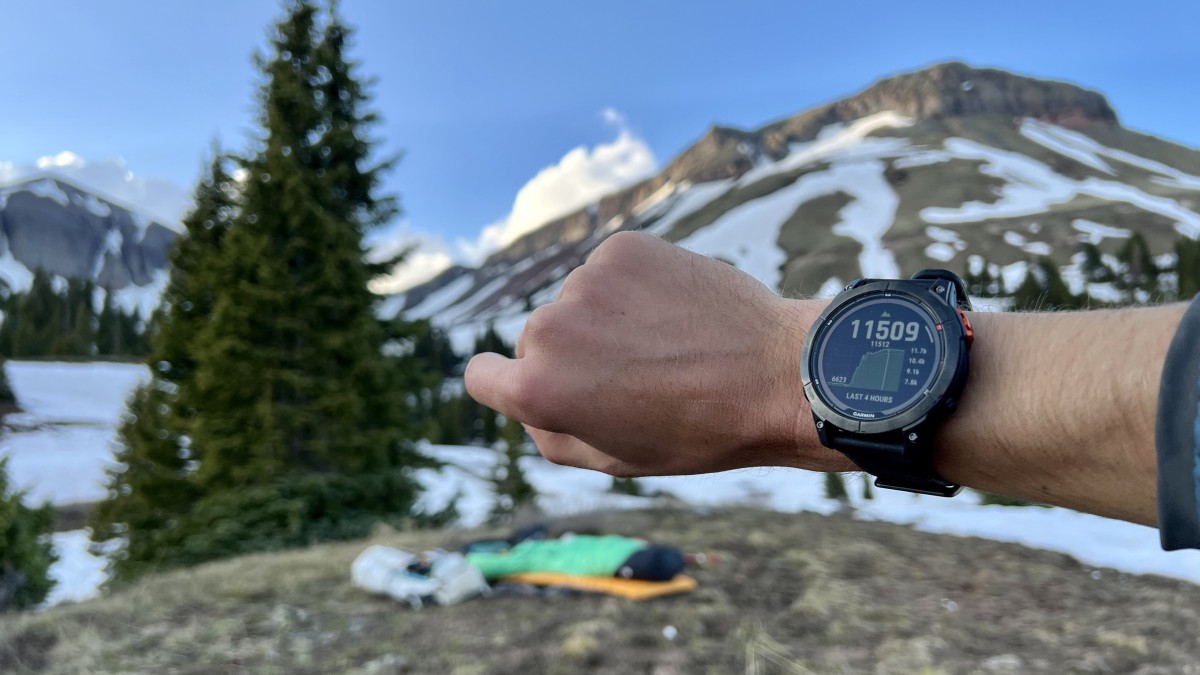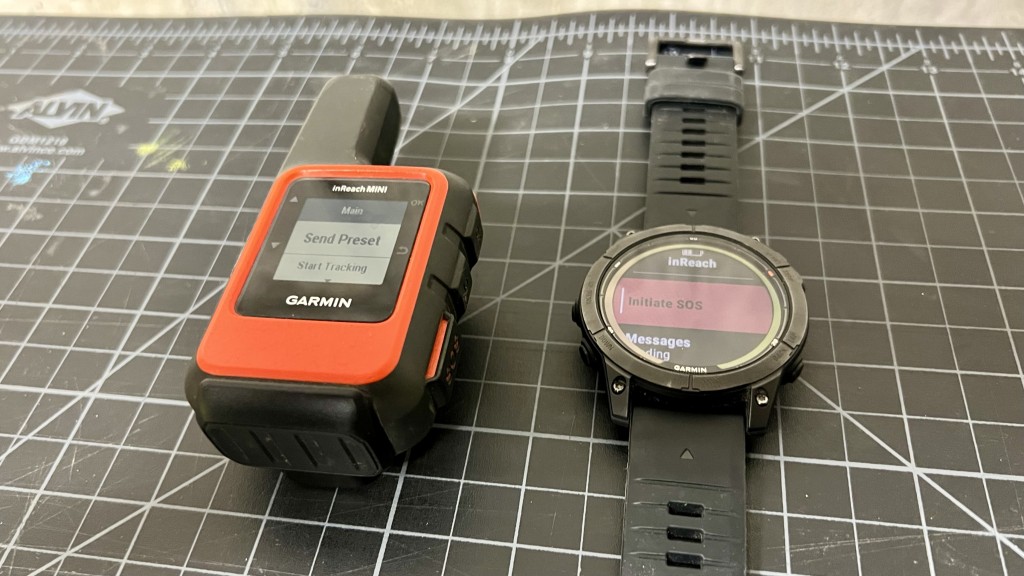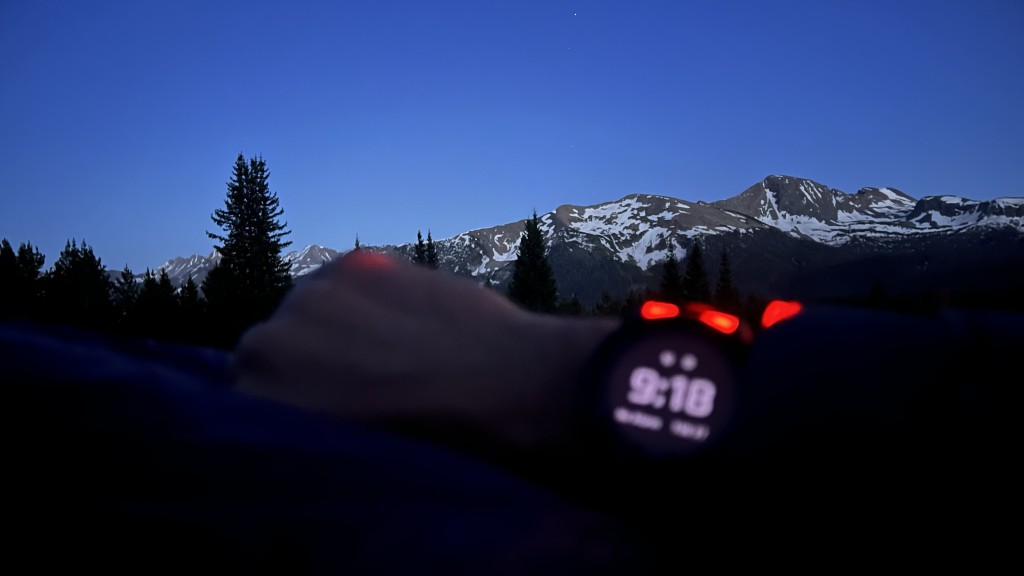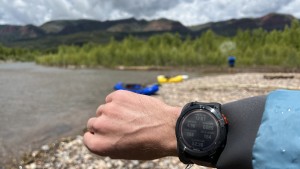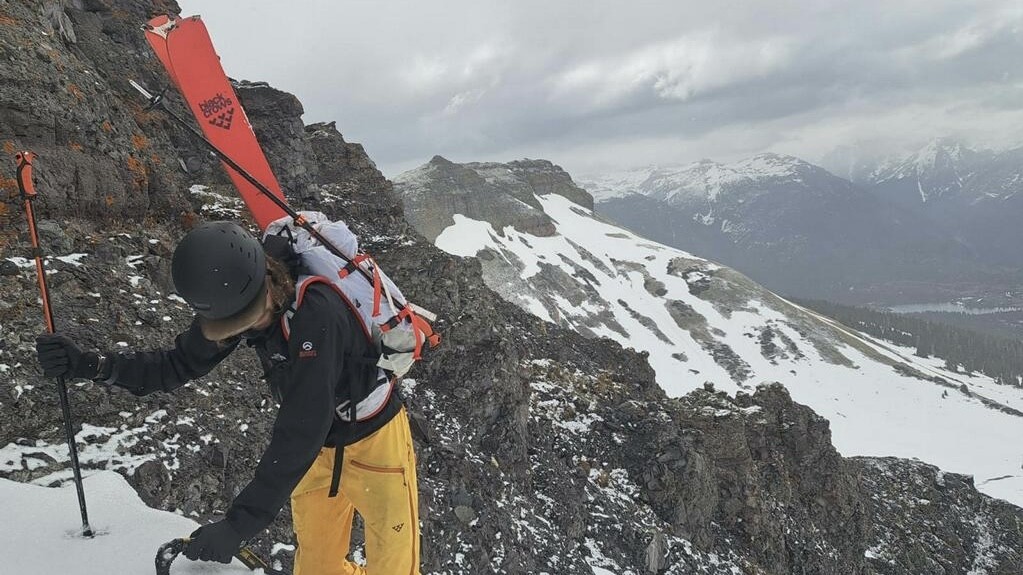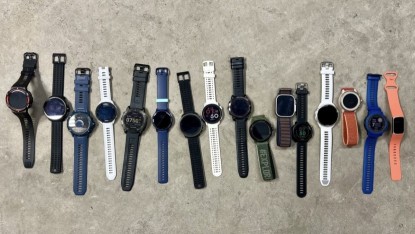Garmin Fenix 7 Pro Solar Review
Our Verdict
Our Analysis and Test Results
The Garmin Fenix 7 Pro provides one of the best user experiences and customization across any GPS watch. Even as the market continues to grow and competition increases, Garmin has continued to set the bar. This update to the Fenix line adds a flashlight, improved heart rate accuracy, solar charging, and loads of new performance metrics.
The Fenix series has been the flagship model in the Garmin lineup and continues to be if you look at both price and performance. While other models in Garmin's lineup could be considered 'better' in terms of battery and materials, the Fenix 7 Pro offers the most features and design at the best price point. Anything higher priced than the Fenix series, and you are in a purely niche market. Other brands and watches are totally adequate and worth buying, but if you want an impressive ecosystem, UI, and design, this is what you want.
Performance Comparison
Accuracy
We've compiled our accuracy score by testing the GPS chipset and heart rate sensor. For GPS testing, each watch traveled a known 2.8-mile course; the watch's total was then compared to this full 2.8-mile distance. We ran with a watch on each wrist for half a mile to test heart rate accuracy. These watches were then compared to our Polar H10 chest strap, which has science-backed accuracy.
We performed the GPS testing all on the same day, providing roughly equal weather conditions. The watches were all tightened equally, providing a controlled fit for the heart rate testing. We then exported all of the data matching the timestamps to provide an equal comparison between the chest-worn HR monitor and GPS watch.
Thanks to the dual-frequency and MULTI GNSS capabilities, this watch could easily locate satellites, even in deep canyons that are notoriously bad due to their limited line of sight. We experienced minimal data inaccuracies, and when tested against our lineup, the Fenix 7 Pro reached the same distance at the end of our test activity, 0.04 off from 2.80 miles. During HR testing, the average came out to +/- 0.461. This is Garmin's newest sensor, and it's a clear winner in terms of accuracy.
Activity Use
The 47mm case and MIP display on the Fenix 7 Pro Solar has some of the best readability and performance of any GPS watch. We would highly recommend this model for a variety of athlete types and users. While expensive, Garmin provides numerous metrics and stats across sports. Each data page can be configured within the mobile companion app, and the app's syncing capabilities are among the fastest compared to competing brands.
Garmin has included all of the most important sensors: altimeter, barometer, and compass, and also included is a temperature sensor which, when removed from your wrist, can show ambient air temp. Detailed maps are available to show different trails or your breadcrumb route if you don't have specific areas downloaded. The navigation is easy to use with the touchscreen or physical buttons. As with all GPS watches, we recommend using the watch in conjunction with a phone for more technical terrain navigation.
We've used the Fenix series for many of our biggest adventures, and it has yet to let us down. The reliability and performance make this our go-to when the route or adventure seems serious. Lighter options are better for pure running like a road marathon, and there are other battery-heavy options out there, but when it comes to performance, this watch is a top contender.
Everyday Use
Garmin was the first to implement the tools and widgets we rave about in the features category, which also greatly increases the ease of use. In addition to that, we are impressed with the interface. The touch screen is excellent (even when wet) and is enabled throughout the entire watch, easily turned on and off from the tool screen. The movement between settings and menus feels natural, and we quickly learned the button layout.
Dedicated buttons make navigation easy even under intense activity or high movement. On other models, we needed to keep the watch locked, especially when wearing gloves or a jacket, to prevent accidental button presses or scrolls. This was just one extra step on those models that made the whole experience feel a bit sluggish. Instantly interacting with your watch and being confident that you can look down during a fast mile and see the last screen you were on is a benefit of the Fenix 7 Pro we can't overstate. If you use auto-scroll, this could be of less importance.
The Garmin Connect mobile application is not as user-friendly as the competitors, and we find the interaction between the watch and the mobile app lacking. While the watch is easy to use, the mobile app feels a bit dated when compared to the competition. That said, we had no issues syncing the watch even with our phone connected to 10+ watches in our test area, and the Fenix accepts both Ant+ and Bluetooth, which we appreciate. Ultimately, all the information you need can be found, and you will learn the application fairly easily, but we think it's one shortcoming of Garmin products. If you use a third-party application like Strava, you may find you only use the app for syncing anyway. You can also sync your Garmin Connect data to the Apple Health app, which we find does a better job of visualizing health data.
Extra Features
You get what you pay for at this price point, so we expect the features to align with that cost — and they absolutely do on the Fenix 7 Pro. There is something for everyone in this model, no matter how you see yourself using a watch. Pairing excellently with a smartphone, you can access notifications and store music or use services like Spotify. Using Garmin Pay, you can add credit cards for use around town for places you know accept contactless payments.
Garmin implements both stat widgets and various easy-to-access tools. These are customizable and accessible anytime when using the watch. Having the ability to access these tool settings quickly is fluid and extremely useful. For example, turning on battery-saving features or enabling or disabling the touch screen. The widgets allow for rich data visualization or interaction with paired tools such as a Garmin inReach. On adventures with potentially higher consequences, having the ability to remotely control and send messages right from the watch offers a peace of mind you can't get on other models.
Health stats are extensive on the Fenix 7 Pro — everything from sleep metrics and scores to stress and energy levels. While the importance of these varies from person to person, it's nice to have them, even if you only glance at them occasionally. Navigation features are rich, and the topo maps are downloadable over wifi but aren't included by default.
We are big fans of this watch's 'resume later' function as well. While perhaps not crucial for everyone, we love having a device that can still act as a watch during workouts. We appreciate that this feature is integrated throughout all of the different activity profiles instead of just specific types like on the Coros models.
New with this update is the addition of a flashlight, which quickly became one of our favorite features. With both a white and red LED, this little light has plenty of strength to illuminate camp or a dark bedroom. Hotkeys allow this to be programmed to any of the buttons on the watch, and it defaults to the previous brightness setting you used. This feature proved to be more useful than we were expecting, and the ability to light up a room without holding anything is incredibly useful. If you are buying a watch at this price point, you will most likely be wearing it 24/7 for its health tracking, so always having a light is handy. One scenario where this proved exceptionally useful was finding things in the middle of the night without needing to find a headlamp. Searching inside a dark sleeping bag for loose items is now a breeze.
Wearability
With a metal bezel and metal back, this is one of the most durable models we tested, and we experienced minimal scratching of the solar glass even when hand-jamming rocks on the Flatirons in Colorado. If screen scratches must be avoided, we'd recommend the Sapphire version, which is even more durable. The screen bezels are small, and the watch face fills the space well. This is one of the brightest models we tested and features blacks/colors and edges that are more defined. Quick glances were more natural, and the data fields were sharper and easily readable even at high output. Some of the competitors required more focus when glancing at the watch — in technical terrain, while moving quickly, glances need to be precise and quick.
The removable watch straps on the Fenix 7 Pro are comfortable, and the design feels good on the wrist, even when working throughout the day at a computer. We feel the 47mm case size is the sweet spot for most people, and we are glad that the standard version of this watch comes in this size. Ultimately, you will have to decide what case size works best for you. When compared with a 51mm, we thought the 47mm was better for running and high-output activities, whereas a 51mm may be better for activities with less arm movement, such as hiking. We wear our GPS watch every day, so we appreciate the nice materials and sleek look of this watch. If you find yourself wearing other watches throughout the day, you may desire a less premium-looking watch at a better price point.
Battery Life
The Fenix 7 Pro doesn't have the best battery life out of all the models we tested, but it is one of the best for the weight and case size, and it now gets a boost from solar charging. We really like the Garmin PowerManager settings; you can turn on battery-saving modes for everyday use or adjust the power mode when starting a workout. The differences between these modes are easy to understand, with pictures showing what is on/off during various activities. On a full charge, we used smartwatch mode with everything turned on for 21 days. Switching to 'battery saver,' with solar charging at 50k lux per day, you can expect well over 100 days of use.
Once starting an activity, you can expect roughly 75 hours of GPS tracking with solar. Switch to 1 min-GPS with UltraTrac, and you can extend it to 200+ hours. However, with the increase in battery life, you increase both weight and case size, which are noticeable when doing high-movement activities such as running. We are glad that most watchmakers are making these switches in power modes easily adjustable and visual while providing the stats behind what you are gaining and losing in functionality. Keep in mind that the sun changes across the world, and different areas receive more intense sunlight, which in turn will charge the watch faster. We find solar charging useful to extend the watch's life, but we don't recommend relying on it entirely.
Should You Buy the Garmin Fenix 7 Pro Solar?
GPS watches are an investment and should last you for many years to come. We wear ours every day, so the high cost of the Fenix 7 Pro is worth it to us. While it would be hard to justify upgrading from the Fenix 7, we think the added heart rate accuracy, flashlight, and solar charging of the Pro model are substantial upgrades for a small hike up in price. This watch helps support our lifestyle, but it also helps us make smart decisions in the backcountry. At this price point, you should consider whether or not you will use these features. If you have a dedicated watch and this one would only be taken out for runs and shorter efforts, you may be able to get away with a cheaper model that does the basics almost just as well. If you want the best, this is the price point of today's market, and we think it's worthwhile.
What Other GPS Watches Should You Consider?
For an option with higher battery life, you could try the Garmin Enduro 2, or the Coros Vertix 2S could suit you better. If you just need something durable, accurate, and more affordable, we'd recommend the Coros Apex Pro 2. This offers everything you need and minimizes a lot of the excess features that increase the pricepoint of the top models.


